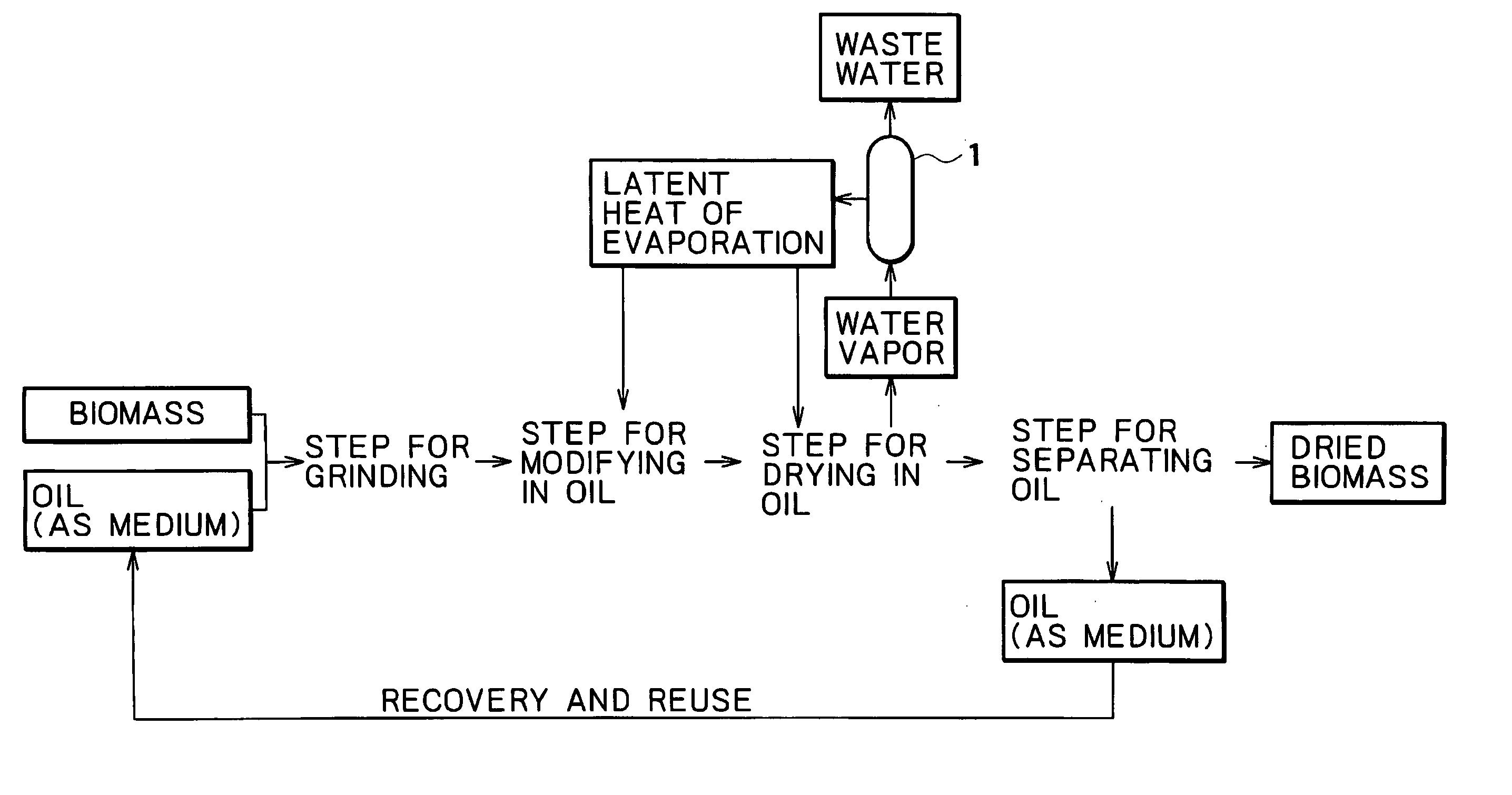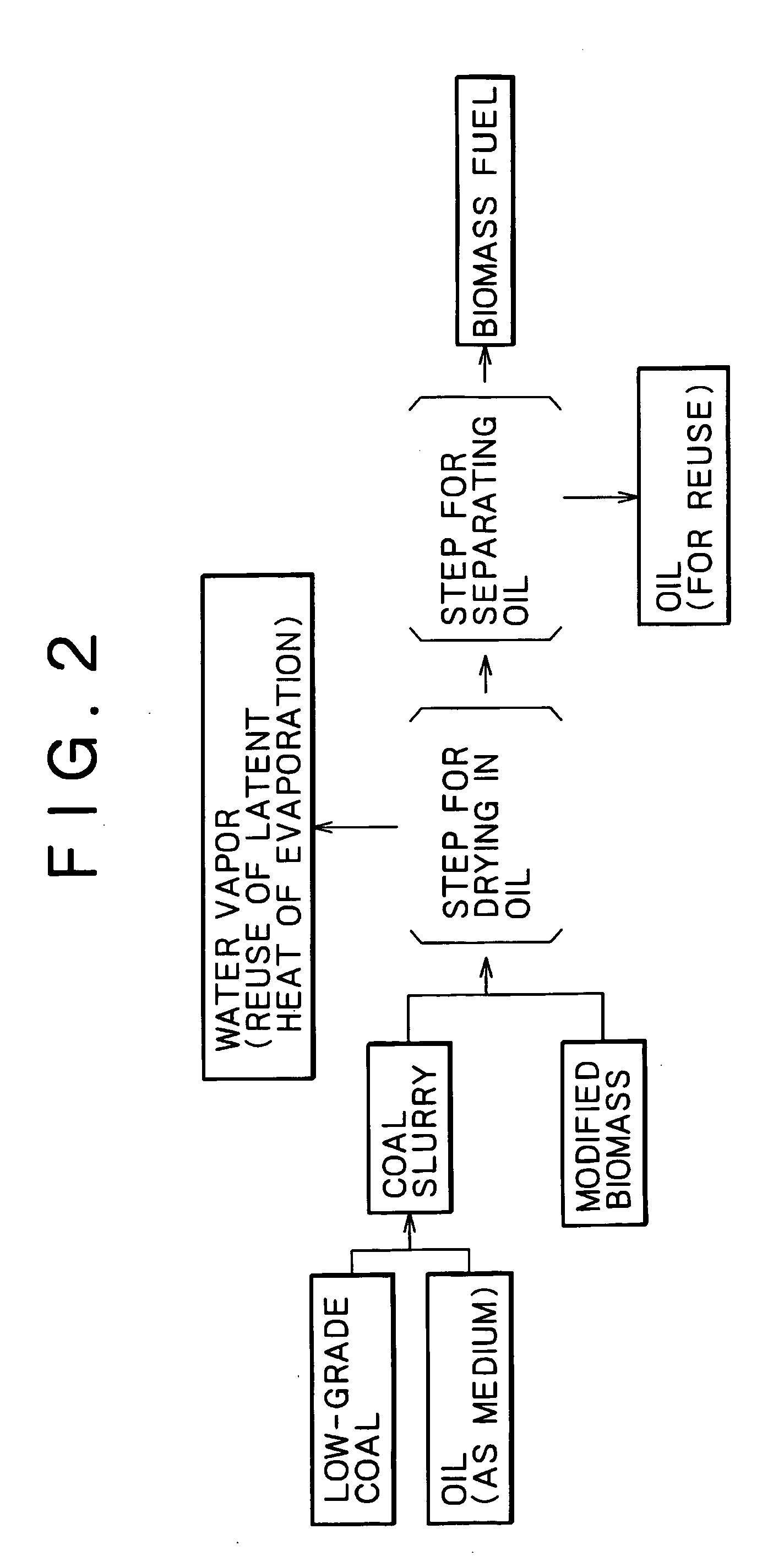Method for drying plant-derived biomass and method for producing biomass fuel
a technology of plant-derived biomass and biomass fuel, which is applied in the direction of biofuels, fuels, waste-based fuels, etc., can solve the problems of insufficient way of disposal of waste materials, high cost of drying steps, and large amount of biomass water, and achieve the effect of effective us
- Summary
- Abstract
- Description
- Claims
- Application Information
AI Technical Summary
Benefits of technology
Problems solved by technology
Method used
Image
Examples
example 1
[0109] A 5-liter autoclave was charged with 292 g of sawdust of New Zealand pine and 1785 g of kerosene. Then, the autoclave was charged with nitrogen at an initial pressure of 1 MPa.
[0110] The contents in the autoclave were heated at 180.degree. C. or 200.degree. C. for 1 hour. After this heat treatment, it was found that the sawdust was adequately decomposed and kerosene separated out. The contents were filtered to separate solids from oil. The amount of oil was weighed.
[0111] A series of experiments was carried out to determine the maximum amount of oil that can be absorbed by the sawdust. It was found that about 5 times as much oil as sawdust (by weight) is absorbed by sawdust. It was also found that the absorbed oil cannot be separated by simple filtration.
[0112] The ability of biomass to release absorbed oil after treatment is expressed in terms of "Rate of liquid separation" (%) calculated from the following equation. 1 Rate of liquid separation = W - ( 1785 - 292 .times. 5 )...
example 2
[0116] A 15-liter autoclave was charged with 1.4 kg of sawdust of New Zealand pine and 5.38 kg of kerosene. The contents were kept at 150-180.degree. C. under a pressure of 0.3 MPa for 1 hour, so that the sawdust was dried. (Sample 1)
[0117] A portion (500 g) of the dried biomass in slurry form was placed in a 5-liter autoclave, and it was heated at 250.degree. C. for 1 hour under a pressure of 1 MPa (initial) to 1.7 MPa. (Sample 2)
[0118] The samples 1 and 2 (both in slurry form) were centrifuged for separation between oil and dried biomass. The separated components were weighed. The samples were also dried by hot air. The dried samples were weighed. Table 2 shows the relative weight of the centrifuged sample, with the weight of the hot-air dried sample being 100.
2 TABLE 2 Sample 1 Sample 2 Relative weigh of 110 104 centrifuged sample Relative weight of hot-air 100 100 dried sample
[0119] Centrifugal separation: 1000 rpm for 10 minutes
[0120] Hot-air drying: at 150.degree. C. for 10 ho...
PUM
 Login to View More
Login to View More Abstract
Description
Claims
Application Information
 Login to View More
Login to View More - R&D
- Intellectual Property
- Life Sciences
- Materials
- Tech Scout
- Unparalleled Data Quality
- Higher Quality Content
- 60% Fewer Hallucinations
Browse by: Latest US Patents, China's latest patents, Technical Efficacy Thesaurus, Application Domain, Technology Topic, Popular Technical Reports.
© 2025 PatSnap. All rights reserved.Legal|Privacy policy|Modern Slavery Act Transparency Statement|Sitemap|About US| Contact US: help@patsnap.com



